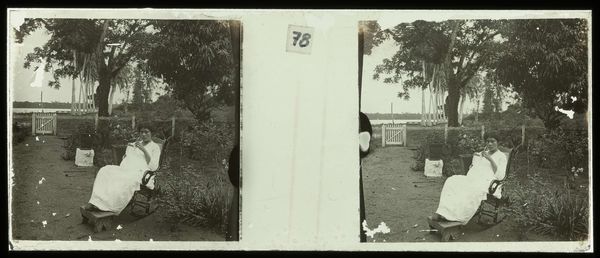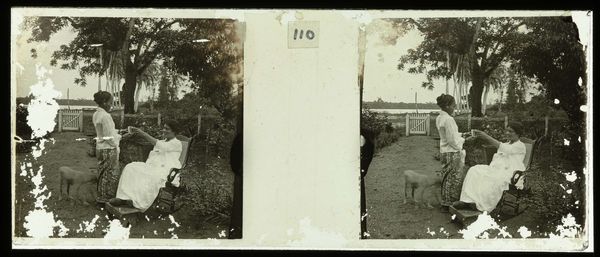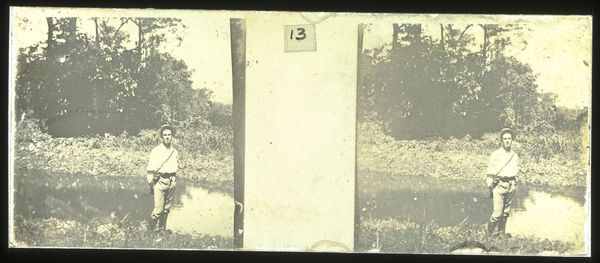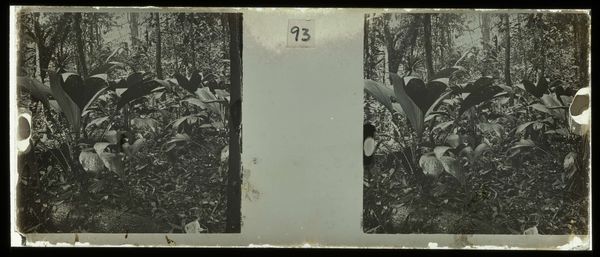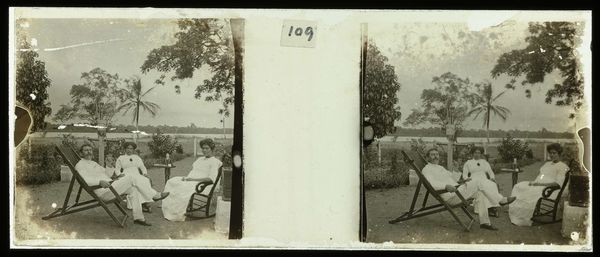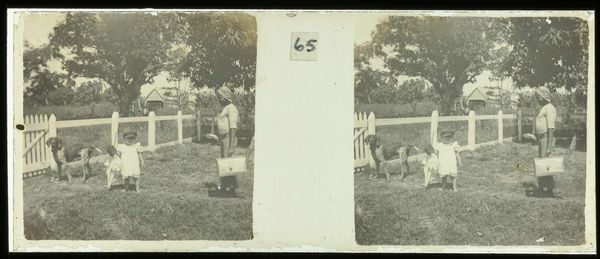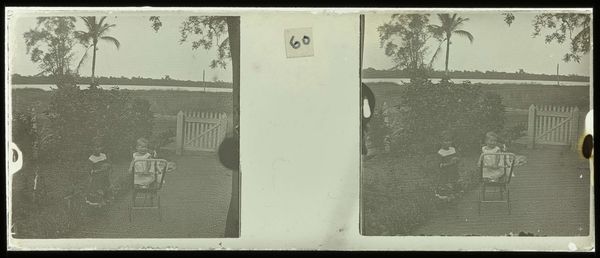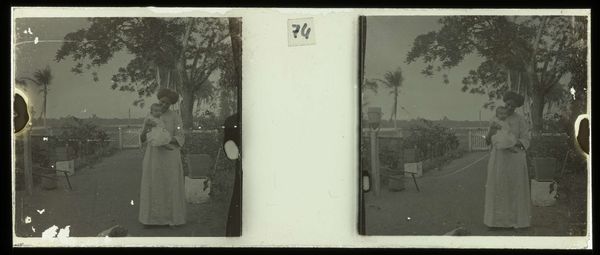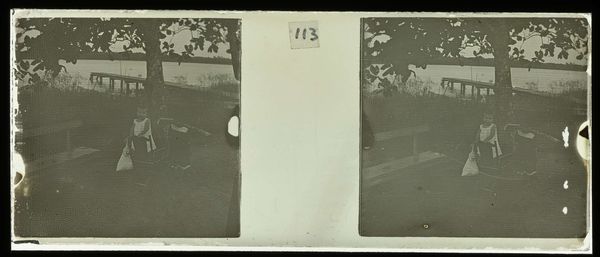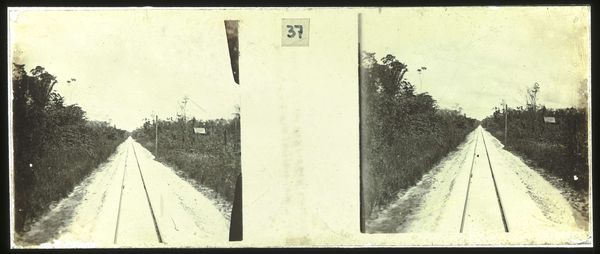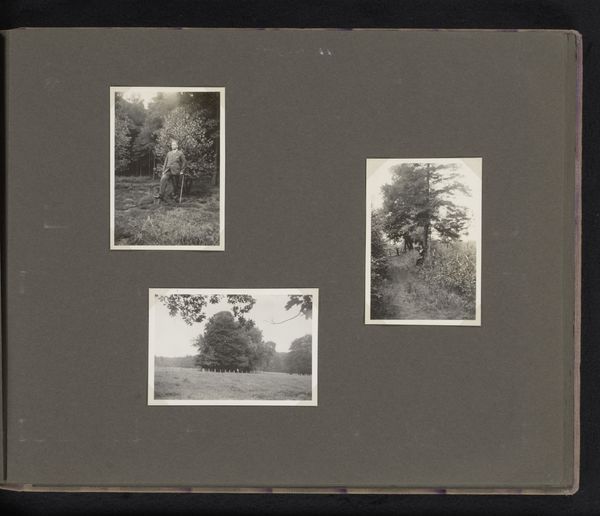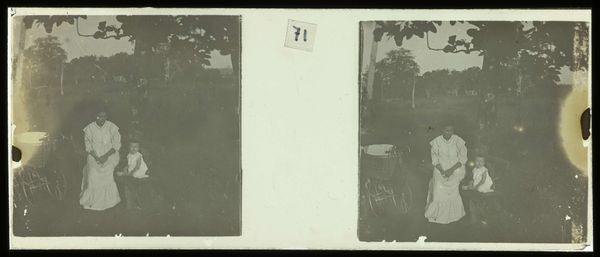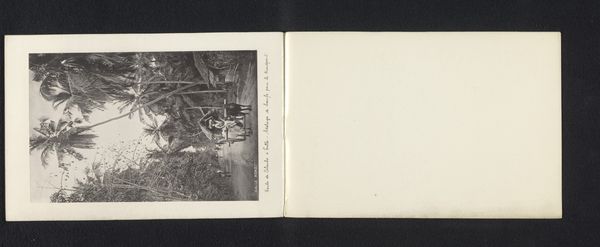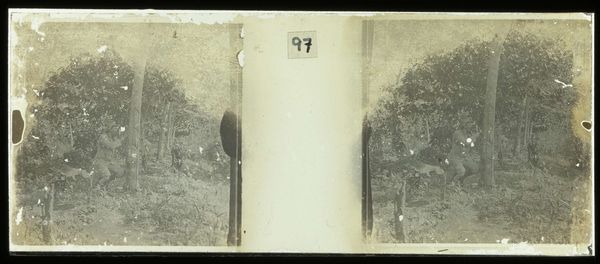
photography, gelatin-silver-print
#
portrait
#
landscape
#
photography
#
gelatin-silver-print
#
realism
Dimensions: height 4.5 cm, width 10.5 cm
Copyright: Rijks Museum: Open Domain
Curator: The gelatin-silver print you're observing is entitled "Plantage Accaribo", by Theodoor Brouwers. It's part of the Rijksmuseum collection and is dated from 1913 to 1930. Editor: The immediate feel of this piece, aside from its antiquated style of course, is a kind of… quiet isolation. There’s a posed serenity but also a sense of stillness, almost loneliness, despite the presence of the two figures. Curator: It's interesting you mention isolation, because when situating this within the colonial history of the time, one must address the fraught position of the subjects within the socio-economic landscape. This likely depicts a Dutch woman and child on a plantation in Suriname, reflecting colonial power structures. Editor: Absolutely, and it makes you wonder about the lives of the local populations, rendered invisible here. What about the landscape? I think the expansive background invites questions of land ownership, exploitation, and ecological impact of these plantations. What sort of political meanings would the artist infuse into realism like that? Curator: Exactly. It speaks to the complexities of Realism as a style during the early 20th century. The medium is significant as well; photography became a tool to document and, in some ways, legitimize colonial expansion. The careful composition emphasizes the perceived 'civilizing' mission. Editor: Right. Even details like the subjects' attire seem to reinforce a sense of cultivated "whiteness" in the wilderness. But perhaps we could look beyond just that. The subdued grayscale tones, the gentle diffusion of light—how does Brouwers engage with those purely artistic choices to build the composition? Curator: I believe this photographic process can highlight not just a physical likeness but deeper power dynamics within the context of colonialism. In these photos we must think carefully about class, gender, and racial representation in that historical moment. Editor: Well, that offers much to contemplate in just a small, old photograph. I am beginning to understand it more deeply now. Curator: Me too, these colonial realities leave a very poignant stain on what is depicted in Brouwers’ work.
Comments
No comments
Be the first to comment and join the conversation on the ultimate creative platform.
